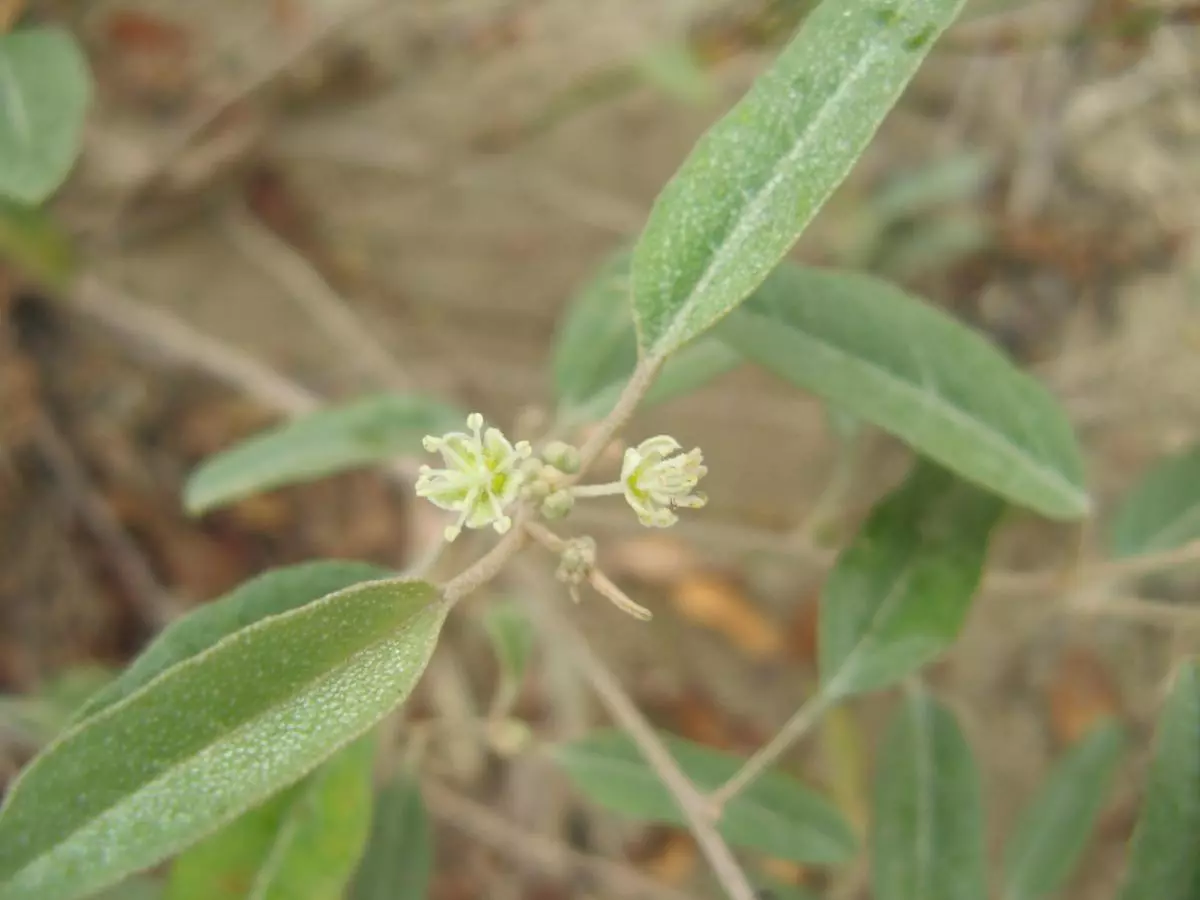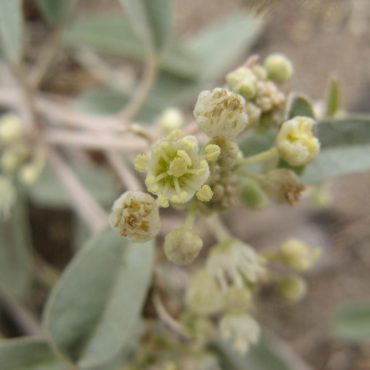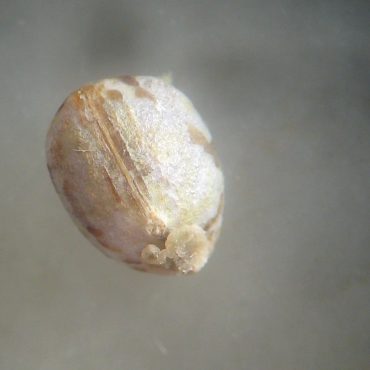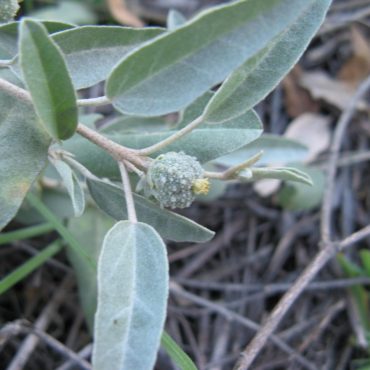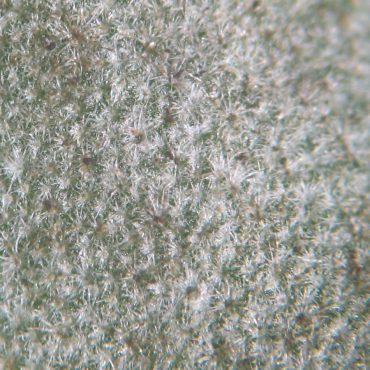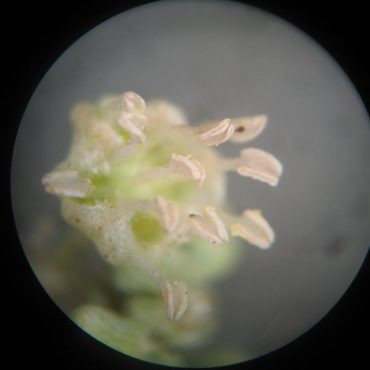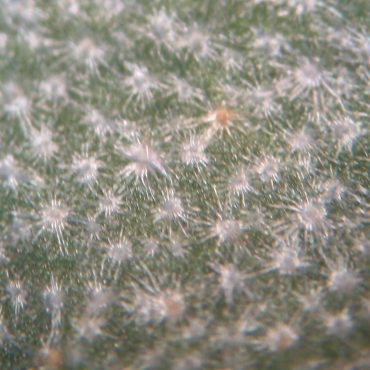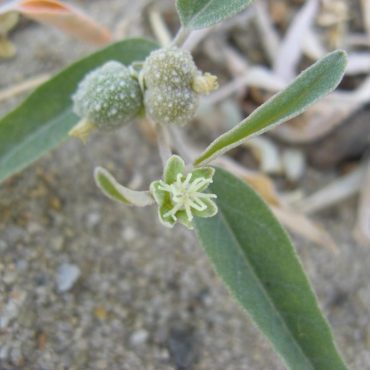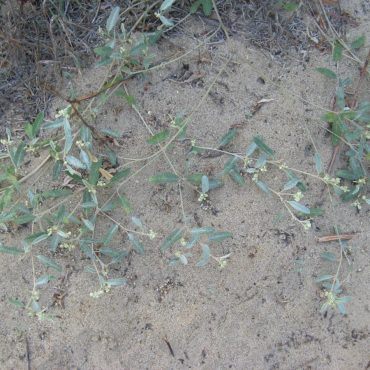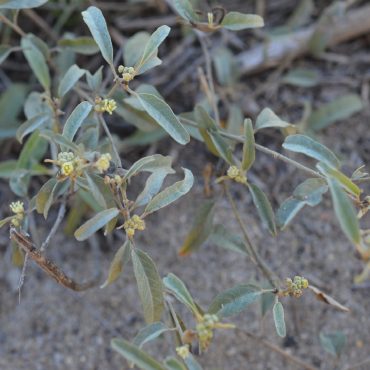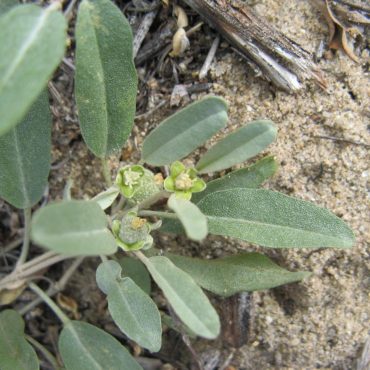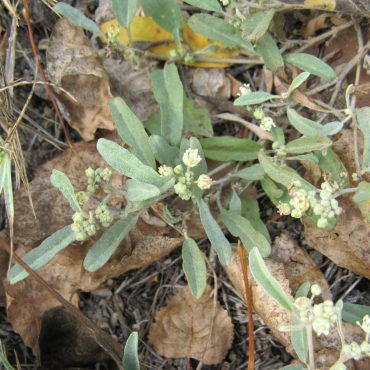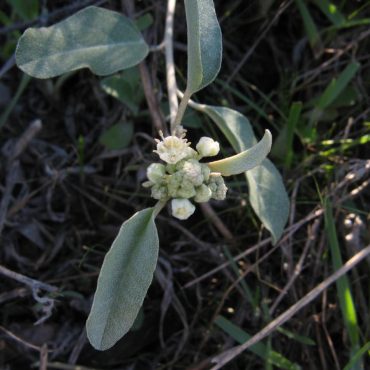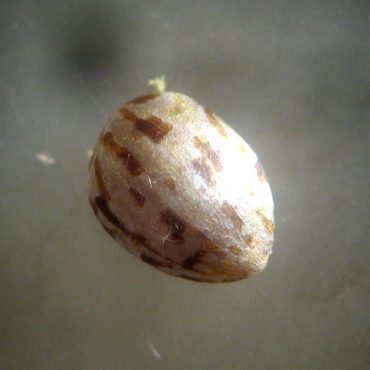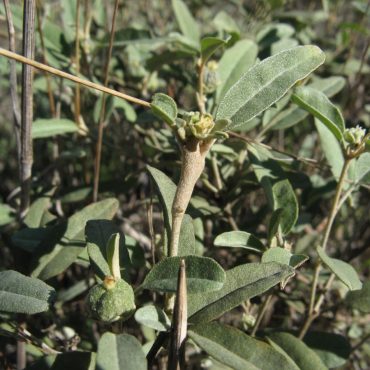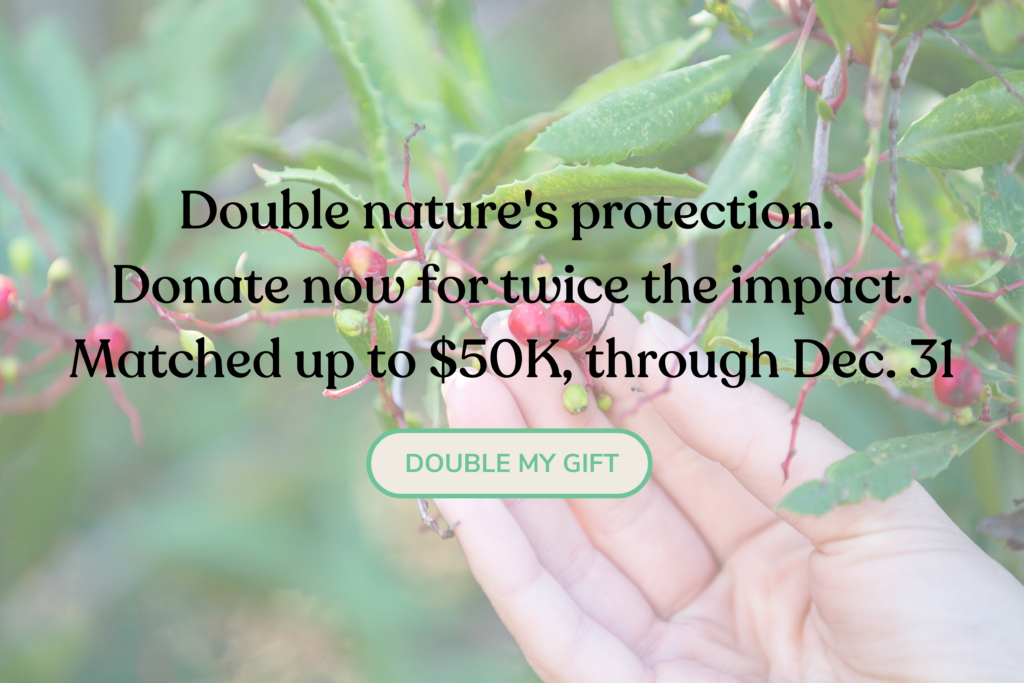Croton is a dicot angiosperm in the spurge family (Euphorbiaceae). This is a large, diverse group containing small herbs, vines, cactus-like succulents, shrubs and trees. Many euphorbias contain a clear or milky sap that is toxic or irritating. Flowers often lack petals, although some species have colorful bracts or glands that function as petals. Flowers are unisexual. Male and female flowers may be on the same plant (plants are “monoecious”) or on separate plants (plants are “dioecious”). The male flowers may have numerous stamens. The pistil of the female plant has three styles; the superior ovary is usually three-lobed and ripens into a dry three-chambered capsule that splits open on maturity releasing one seed per chamber.
The spurge family contains a variety of decorative, useful and annoying species, including the cheerful, holiday poinsettia (Euphorbia pulcherrima), the entertaining Mexican jumping bean (Sebastiania pavoniana), the deadly castor bean (Ricinus communis) and the omnipresent garden weed, spotted spurge (Euphorbia maculata). Other native euphorbias in the Reserve are doveweed (Croton setiger), and cliff spurge (Euphorbia misera). Non-natives include castor bean and a variety of weedy species, including the spotted spurge.
The genus Croton is a large and complicated genus. Recently, The Croton Project was established to bring botanists and ecologists together to clarify the taxonomy and phylogeny of the genus.218 Currently, members of the Croton genus are characterized by the development of the stamens and, to a large extent, by the presence of stellate hairs. Unlike many members of the spurge family, California croton lacks milky sap and is not known to be toxic.209 However, there are colorful house plants also called croton (Codiaeum spp.) that contain “quite a cocktail of bad stuff” which cause dermatitus and, if ingested, can be toxic to both pets and humans.215,216
Jepson eFlora Taxon Page

